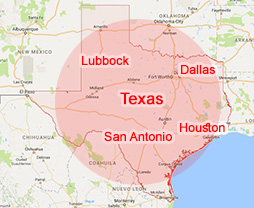Job completed for Joseph Maldonado-Passage Tiger King Joe Exotic
Completion date: February 18, 2021
Location: Fort Worth, TX
Why did the customer contact us?
10th Circuit Court of Appeals, Denver Colorado
Letter Brief on the Court’s Denial of Defendant’s Motion to Sever Counts. Case No. 20-6010 on appeal from the District Court No. 5:18-cr-0027-SLP
Solutions provided:
Federal Prisoners DO NOT have access to PACER
The law
Federal of Criminal Procedure 8(a) provides as follows: “(a) Joinder of Offenses. The indictment or information may charge a defendant in separate counts with 2 or more offenses if the offenses charged—whether felonies or misdemeanors or both—are of the same or similar character, or are based on the same act or transaction, or are connected with or constitute parts of a common scheme or plan.”
Federal Rule of Criminal Procedure 14(a) provides as follows: “(a) Relief. If the joinder of offenses or defendants in an indictment, an information, or a consolidation for trial appears to prejudice a defendant or the government, the court may order separate trials of counts, sever the defendants’ trials, or provide any other relief that justice requires.”
The decision whether to grant or deny severance is in the sound discretion of the district court and will not be disturbed on appeal unless there is an affirmative showing of abuse of discretion. United States v. Hollis, 971 F.2d 1441, 1456 (10th Cir. 1992). A trial court may grant a severance if it appears that the defendant or Government is prejudiced by joinder. United States v. Herring, 582 F.2d 535 (10th Cir. 1978). In order to obtain a severance, a defendant must show clear prejudice resulting from joinder at trial. United States v. Bridwell, 583 F.2d 1135 (10th Cir. 1978).
The Motion and Order
In the trial court, defendant asked the trial court to sever Counts 1 & 2 from the remaining counts, Counts 3–21. He sought severance because these counts were improperly joined, ROA.30, and because the joinder would cause him substantial prejudice. ROA.33. With respect to improper joinder, defendant complained that the “the murder for hire counts were improperly joined under Rule 8 because they [we]re not part of the same character, not the same act or transaction,
nor [we]re they parts of a common scheme or plan.” ROA.31 (citing United States v. Bailey, 952 F.2d 363, 364–65 (10th Cir. 1991). Counts 1 & 2 were murder for hire charges under 18 U.S.C. § 1958(a) while Counts 3–21 alleged wildlife violations under the Endangered Species and Lacey Acts. With respect to substantial prejudice, defendant argued that substantial prejudice could come from several areas: that his alleged killing five tigers at the exotic at his animal park would unfairly prejudice him with the murder-for-hire counts, ROA.33, that evidence of these alleged killings would be improper propensity evidence, ROA.34, and that the the jury might confuse and cumulate the evidence because the murder-for-hire evidence is wholly separate and different from the wildlife violations leading to convictions that would not otherwise have occurred. ROA.35.
The government filed a response, ROA.54, and a supplemental response. ROA.90.
The district court entered an order denying the motion to sever. Regarding the initial joinder question, the district court noted that the government did not contend that joinder was proper either because the offenses were of the same or similar character or because they were from the same act or transaction, ROA.115; therefore, the court would only consider whether the acts or transactions are connected or part of a common scheme or plan. ROA.115. The district court found “that the allegations made against Defendant are adequately alleged as parts of or connected to a common scheme or plan.” ROA.116. “The Government alleges that both the murder-for-hire offenses and the ESA/Lacey Act offenses resulted from the same contentious and litigious relationship between Defendant and C.B.” ROA.116. “The Court therefore determines that the murder-for-hire counts and the ESA/Lacey Act counts asserted by the Government and against the Defendant were properly joined under Rule 8(a).” ROA.117. The district court then concluded that the joinder would not prejudice defendant. ROA.118. The district court concluded that curative instructions would prevent any propensity convictions. ROA.118. The district court also concluded the significant overlap of testimony on the two groups of counts justified joinder because any prejudice to the defendant was outweighed by the expense and inconvenience of multiple trials. ROA.119.
These counts were improperly joined
These different types of offenses are not the kind of offenses that are typically joined in an indictment. For example, in United States v. Barrett, 496 F.3d 1079, 1097 (10th Cir. 2007), this Court affirmed the joinder of charges stemming from a single incident: the defendant’s shooting at officers serving a warrant on his property and killing one of the officers. In United States v. Thomas, 849 F.3d 906, 912 (10th Cir. 2017), this Court affirmed the joinder of multiple robberies in the same indictment. Though one was earlier-in-time, all were at the same intersection and conducted in the same manner. Id. In United States v. Hutchinson, 573 F.3d 1011, 1027 (10th Cir. 2009), this Court affirmed the joinder of drug charges occurring at a motel and then at other locations because “his drug business trotted along much as it had before. He still supplied drugs for the operation. Mr. Hutchinson still served as the primary dealer. Other dealers remained largely the same. Mr. Thompson even bailed some of the Alpine Rose participants out of jail. Only the operation's central headquarters seems to have changed.” On the other hand, this Court has affirmed a district court’s refusal to join unrelated offenses. In United States v. Deloera-Escalera, No. 14-5143, *4 (10th Cir. January 15, 2016) (unpublished), this Court affirmed the district court’s refusal to join an illegal reentry charge with drug charges.
Here, the murder-for-hire and wildlife offenses neither occurred at the same place or time nor in the same manner or way. The offenses were not even related much similar. Counts One and Two alleged murder-for-hire; the remaining counts were wildlife violations pertaining to the defendant’s possession of big cats. This situation is much more like Deloera-Escalera than Barrett, Thomas, or Hutchinson. Therefore, this Court should find that the district court erred in denying the motion to sever.
What’s more, the district court improperly expanded what constitutes a common scheme or plan. The district court concluded that these offenses were properly joined as part of a common scheme or plan—“the same contentious and litigious relationship between Defendant and C.B.” ROA.116. Hutchinson illustrates a common scheme or plan. There, the defendant was actively involved in drug distribution at a motel and continued those at another location after a drug dealer was murdered at the motel. Hutchinson, 573 F.3d at 1017–18, 1027. “Only the operation's central headquarters seems to have changed.” Id. at 1027. In the present case, the district court found not a common scheme or plan of criminal conduct but a “contentious and litigious relationship between Defendant and C.B.” ROA.117. A contentious and litigious relationship is not a crime. It may have been the root of some of the defendant’s—the murder-for-hire allegations—conduct, but it itself was not a common scheme or plan, and as noted above, the wildlife violations were wholly separate and unrelated. Simply put, crimes and a contentious and litigious relationship are facially different things. Therefore, the district court erred by finding that there was a common scheme or plan justifying joinder.
Overlapping evidence in this case shows the prejudice
Some of the evidence at trial illustrates the prejudice experienced by defendant. Investigators exhumed the skulls of the tigers and brought them into the courtroom. Jurors saw a photo from Facebook showing C.B.’s employees bashing rabbits in the head. The putative hitman wanted to kill C.B. by cutting her head off. Decapitation pervaded this trial.
Investigators were looking for the tigers that had allegedly been shot. “Q. (By Mr. Brown) And so explain just in detail what it is you-all are doing. A. We are trying -- after we found the carcass, we were trying to locate the skulls. The information we had were that the tigers were shot, so we were looking to find the skulls and remove the skulls.” Vol. 3, p. 104. All five tigers were found. “We -- we found five tigers lined up side by side, kind of like hot dogs in a pack. They were just kind of laid right next to each other.” Id. The carcasses had been in the ground about a year when they were found. “Q. Okay. And were they -- how was the decomposition? A. The skin was still intact. The heads were still intact. They had been in the ground, I guess, about a year or so, or less. I'm not sure. But it was still pretty stinky. It was really bad.” Id. Only the skulls were recovered. In a scene that could have come from a mafia movie, the skulls were removed with a reciprocating saw. “Q. Okay. And did you and your search team actually exhume all five tigers? A. We exhumed the skulls off of all five tigers. Q. And explain how you would separate the skulls from the actual tiger carcass. A. To separate the head off of the carcass with a reciprocating tool, and then also like a saw or a knife to separate the head from the vertebrae.” Id. Pictures of the exhumation site including the bodies in the ground with flags where the heads had been removed from were introduced. “A. In 1.8, this is the hole where the -- or the pit where the tigers' head -- the heads were removed. So the carcasses are still in the ground. The yellow flags represent where the heads were removed from the carcasses.” Vol. 3. p. 107. The skulls were then mailed to a forensics lab. “A. They were mailed to a National Fish & Wildlife forensics lab in Ashland, Oregon.” Vol. 3 p. 108. The carcasses “were left in the pit.” Id. Forensic examination of the skulls revealed that four of the tigers had been killed by gunshots and one had been killed by blunt force trauma. Vol. 3, p. 137. At least one tiger was killed with a shotgun blast to the head. “Well, because shot pellets were found in the skull, indicative of a shotgun injury, this well-defined nature indicates that the barrel of the shotgun was held very close to the animal's head.” Vol. 3, p. 145.
Later in the trial, the putative hitman discussed ways to kill C.B. This hitman had a felony conviction, so he was reluctant to use a firearm to commit the murder. Vol. 3, p. 624–25. So he proposed killing her by cutting her head off. “Q. Now, you had said that you were uncomfortable with the idea of guns because you have this felony conviction. Did you propose any other ways of killing her to Mr. Passage? A. Yeah, I would cut her head off.” Vol. 3, p.626 (emphasis added).
The jury also got to hear about killing rabbits. “It was a picture that I got off of Facebook of three of her employees bashing rabbits in the head and bloody, dead rabbits to feed to the tigers and laughing about it. So kind of give her a little taste of her own medicine -- and I sent that picture to every rabbit rescue in the country I could find, and she got a taste of her own medicine.” Vol. 3, p. 938.
In short, the jury got to see exhumed tiger heads, rabbits bashed in the skull, and a hitman wanting to decapitate C.B. rather than shoot her. Just this one aspect of the trial prejudiced the defendant as the wildlife violations were intermingled with the other charges in the most graphic and gruesome way possible.
Conclusion
The district court erred by refusing to sever the murder-for-hire counts from the wildlife violation counts. They were not part of a common scheme or plan. Indeed, they were not even similar much less related. The district court’s conclusion that they were incorrectly concluded that a contentious and litigious relationship is a common scheme or plan of crime. This improper joinder prejudiced the defendant by pervading the trial and the jury with decapitation—of tigers, rabbits, and a human. This was error. The defendant asks this Court to vacate his convictions and remand this case for new trials where the counts are properly severed.
Thank you,
/s Joseph Maldonado-Passage
26154-017
Post Office Box 15330
3150 Horton Road
Fort Worth, Texas 76119
Team members on this project:
Doug Gosewisch






